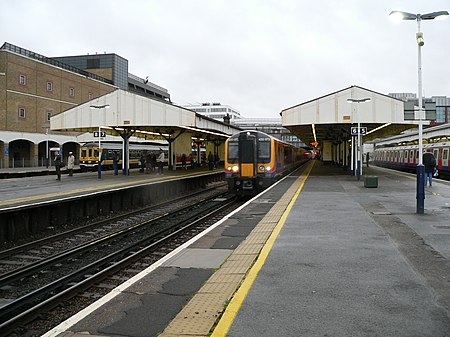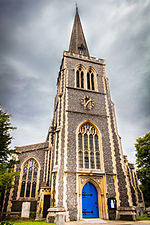Wimbledon station

Wimbledon is a National Rail, London Underground, and Tramlink station located on Wimbledon Bridge, Wimbledon in London, and is the only station in London that provides an interchange between the London Underground and Tramlink. The station serves as a junction for services from the Underground's District line and National Rail operators (South Western Railway and Thameslink), as well as Tramlink services. The station is in Travelcard Zone 3. It is 7 miles 19 chains (11.6 km) from London Waterloo on the South West Main Line. The station has 11 platforms. Platforms 1–4 are for London Underground, platforms 5 and 8 are for inner suburban South Western Railway services, platform 9 is for Thameslink and platforms 10a and 10b are for Tramlink. Platforms 6 and 7 are adjacent to the fast tracks intended for express and outer suburban South Western Railway services, but most of these services only call at Wimbledon during the Wimbledon Tennis Championships or on Sundays for outer suburban services. Access to these platforms is via sliding gates through safety fencing installed in March 2014.
Excerpt from the Wikipedia article Wimbledon station (License: CC BY-SA 3.0, Authors, Images).Wimbledon station
Alexandra Road, London Wimbledon Village (London Borough of Merton)
Geographical coordinates (GPS) Address Nearby Places Show on map
Geographical coordinates (GPS)
| Latitude | Longitude |
|---|---|
| N 51.4232 ° | E -0.2043 ° |
Address
Alexandra Road
Alexandra Road
SW19 7JZ London, Wimbledon Village (London Borough of Merton)
England, United Kingdom
Open on Google Maps







